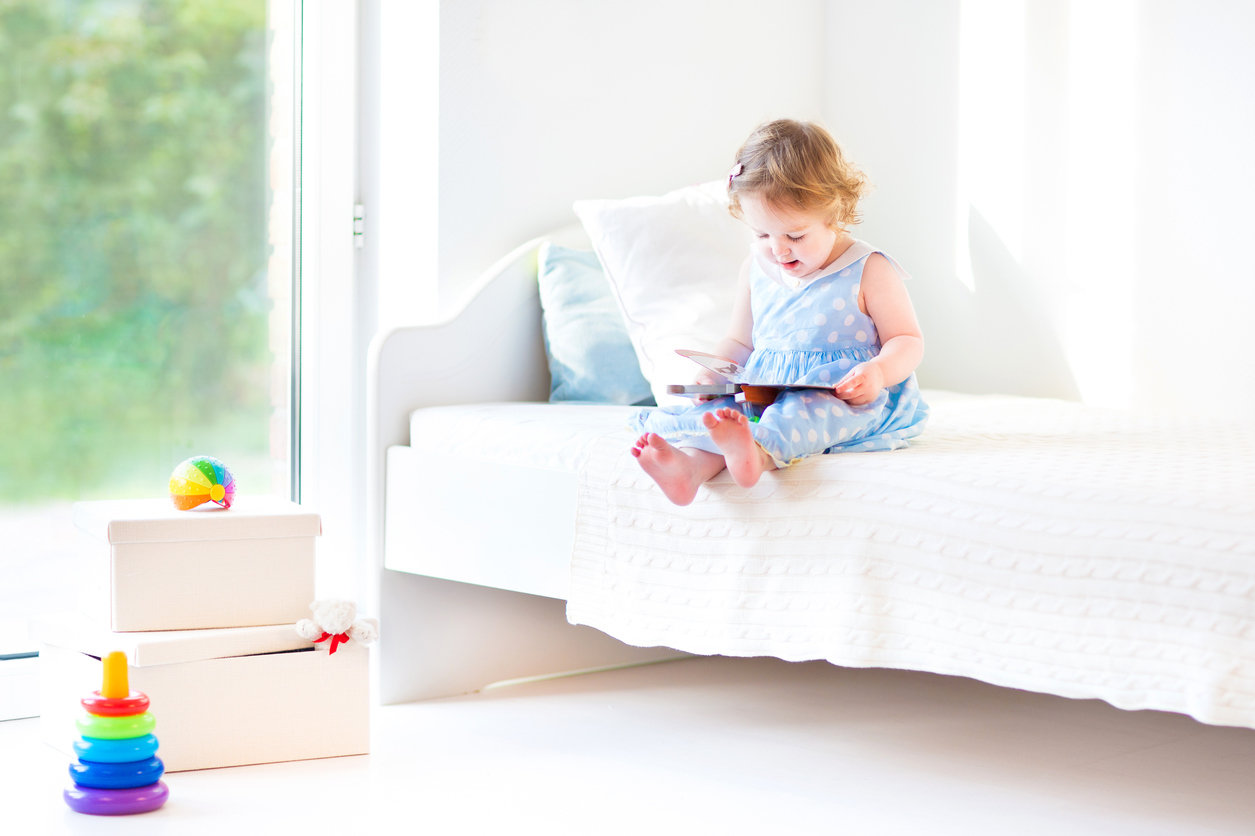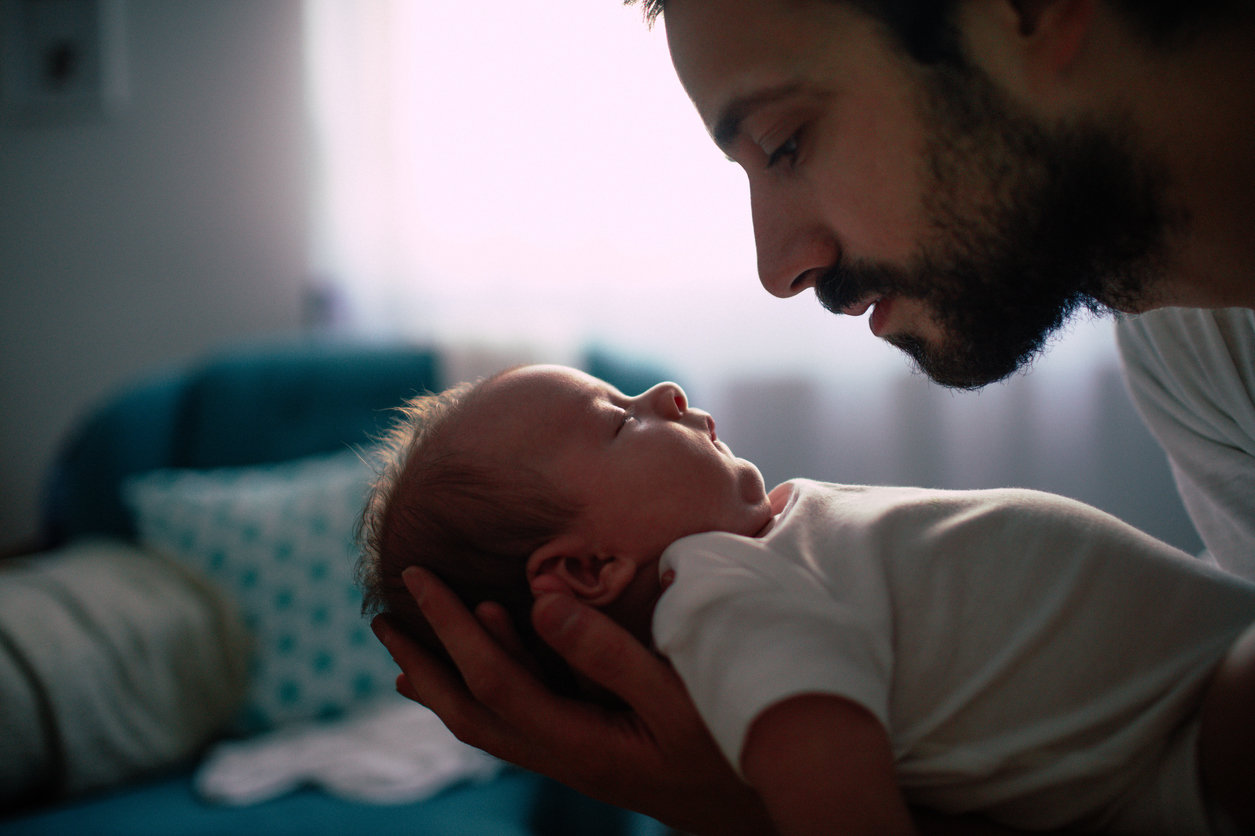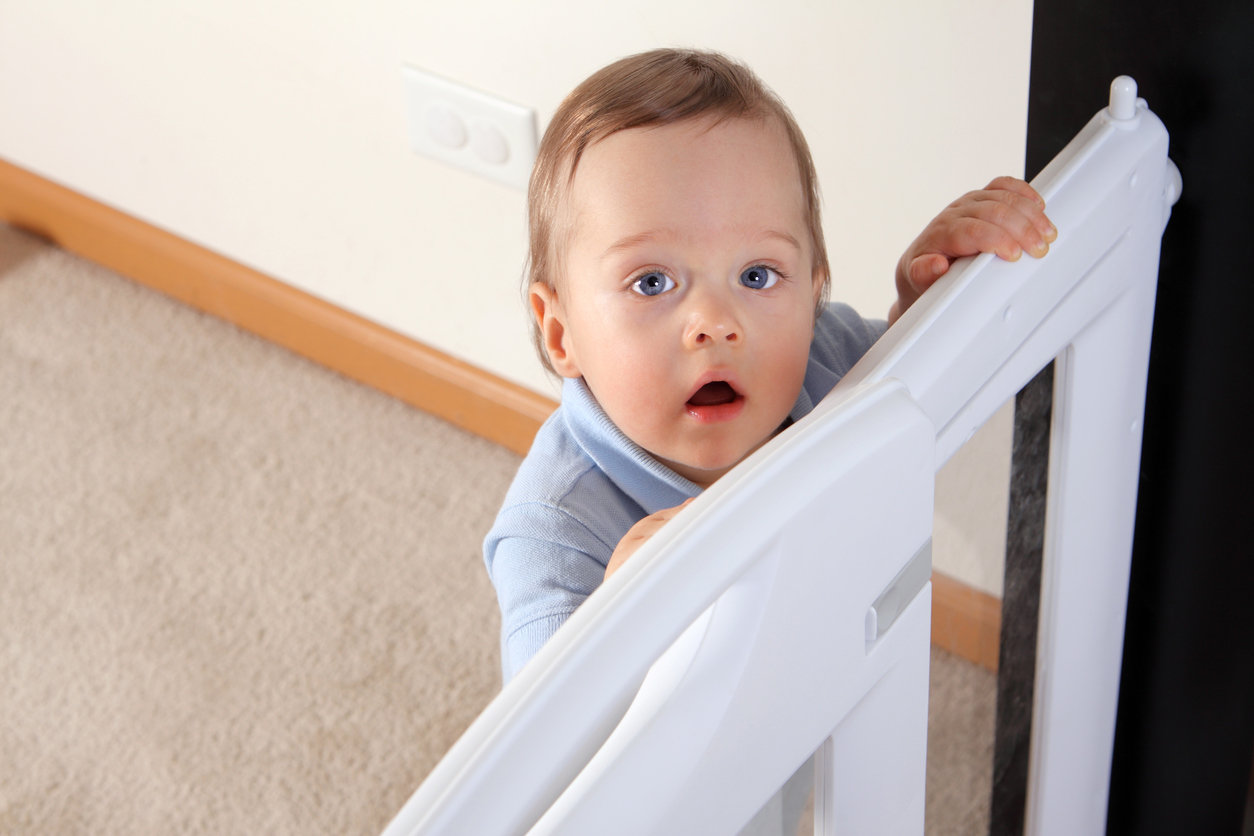Because this arrangement presents some unique challenges, we asked sleep experts and moms for their best advice on how to make room sharing a peaceful experience for all (including you!). “Due to feeding schedules, infants younger than 6 months old will likely need to sleep in a separate room from their siblings. Many families find that having a young infant sleep in the parents’ room — in a crib or co-sleeper — works best,” says Daniel Lewin, PhD, psychologist and associate director of sleep medicine at Children’s National Health System. “Toddlers often need more one-on-one attention and time with a parent before being able to fall asleep,” explains Dr. Lewin. “Starting the toddler on an earlier sleep routine can help ensure he or she is in a deeper sleep, and less likely to become engaged when the infant enters the room.” “Parents could try putting their child to sleep in another room first and then moving him or her into the shared space with the toddler once the toddler is asleep.” “While every child is different, older children may want to participate in helping their younger siblings prepare for bedtime,” says Dr. Lewin. “Try having the older sibling help sing a bedtime song or lullaby or participate in bedtime storytelling. This routine can serve as a cue to begin his or her own bedtime preparation.” “For safety reasons, it’s best if the beds are farther apart,” says Dr. Lewin. “Depending on the children, arranging the beds so there is less visual contact, and less distraction, can also be beneficial for helping each child fall asleep and stay asleep throughout the night.” “Be flexible when one of them is teething or someone has a cold,” recommends Lisa Furuland, mom of two boys and the creator of the portable infant sleeper DockATot. “Eventually, they will get into a routine of sleeping through each other’s sounds. [Until then] set up a backup location for the baby for nights when no one is sleeping.” “When siblings share a room, it is ideal to have a dark, quiet setting,” says Furuland. “This is a brand-new situation for both kids. By keeping the lights dimmed, the distraction of seeing one another will be reduced.” “Develop a routine for each child’s individual sleep habits,” says Furuland. And, perhaps it goes without saying, but “bedtime should be at the same time each night,” she adds. “Above all else, make sure that the room poses no safety hazards for the younger child,” says Furuland. “Make sure that the toddler cannot climb into the baby’s crib or give the baby any items that could pose a choking hazard.” “I tried to make a game out of learning to whisper and tiptoe with my older son before my daughter was born,” says Patty S. of New York. “It really helped later because if the baby was sleeping he knew what to do, or at least he tried!” “Sometimes my little one woke up my big one, and sometimes my big one woke up my little one, especially in the beginning,” says Patty. “But if you can just get through the hard times, you’ll make it!” “Unfortunately the baby had colic and all I could do was walk around the room bouncing him. So I started playing audiobooks for my daughter while I stayed in the room and rocked my son to sleep, and it worked!” “Using a white noise machine or smartphone app can be very beneficial in helping a child fall asleep and stay asleep,” says Dr. Lewin. “Not only does the sound mitigate other noises that could rouse the child from sleep, but it also provides consistent, repetitive sound that can help calm a child’s sensory and emotional arousal. It is important to be aware that if your infant falls asleep with white noise at the beginning of the night, they may need the same cues present to return to sleep when they have brief awakenings in the middle of the night.” “I generally allow them to have a little time, 15 to 30 minutes, before going in for the firm ’lights out!’” she says.
















title: “14 Sleep Tips For Babies Toddlers Who Share A Bedroom” ShowToc: true date: “2024-10-17” author: “John Miller”
Because this arrangement presents some unique challenges, we asked sleep experts and moms for their best advice on how to make room sharing a peaceful experience for all (including you!). “Due to feeding schedules, infants younger than 6 months old will likely need to sleep in a separate room from their siblings. Many families find that having a young infant sleep in the parents’ room — in a crib or co-sleeper — works best,” says Daniel Lewin, PhD, psychologist and associate director of sleep medicine at Children’s National Health System. “Toddlers often need more one-on-one attention and time with a parent before being able to fall asleep,” explains Dr. Lewin. “Starting the toddler on an earlier sleep routine can help ensure he or she is in a deeper sleep, and less likely to become engaged when the infant enters the room.” “Parents could try putting their child to sleep in another room first and then moving him or her into the shared space with the toddler once the toddler is asleep.” “While every child is different, older children may want to participate in helping their younger siblings prepare for bedtime,” says Dr. Lewin. “Try having the older sibling help sing a bedtime song or lullaby or participate in bedtime storytelling. This routine can serve as a cue to begin his or her own bedtime preparation.” “For safety reasons, it’s best if the beds are farther apart,” says Dr. Lewin. “Depending on the children, arranging the beds so there is less visual contact, and less distraction, can also be beneficial for helping each child fall asleep and stay asleep throughout the night.” “Be flexible when one of them is teething or someone has a cold,” recommends Lisa Furuland, mom of two boys and the creator of the portable infant sleeper DockATot. “Eventually, they will get into a routine of sleeping through each other’s sounds. [Until then] set up a backup location for the baby for nights when no one is sleeping.” “When siblings share a room, it is ideal to have a dark, quiet setting,” says Furuland. “This is a brand-new situation for both kids. By keeping the lights dimmed, the distraction of seeing one another will be reduced.” “Develop a routine for each child’s individual sleep habits,” says Furuland. And, perhaps it goes without saying, but “bedtime should be at the same time each night,” she adds. “Above all else, make sure that the room poses no safety hazards for the younger child,” says Furuland. “Make sure that the toddler cannot climb into the baby’s crib or give the baby any items that could pose a choking hazard.” “I tried to make a game out of learning to whisper and tiptoe with my older son before my daughter was born,” says Patty S. of New York. “It really helped later because if the baby was sleeping he knew what to do, or at least he tried!” “Sometimes my little one woke up my big one, and sometimes my big one woke up my little one, especially in the beginning,” says Patty. “But if you can just get through the hard times, you’ll make it!” “Unfortunately the baby had colic and all I could do was walk around the room bouncing him. So I started playing audiobooks for my daughter while I stayed in the room and rocked my son to sleep, and it worked!” “Using a white noise machine or smartphone app can be very beneficial in helping a child fall asleep and stay asleep,” says Dr. Lewin. “Not only does the sound mitigate other noises that could rouse the child from sleep, but it also provides consistent, repetitive sound that can help calm a child’s sensory and emotional arousal. It is important to be aware that if your infant falls asleep with white noise at the beginning of the night, they may need the same cues present to return to sleep when they have brief awakenings in the middle of the night.” “I generally allow them to have a little time, 15 to 30 minutes, before going in for the firm ’lights out!’” she says.















